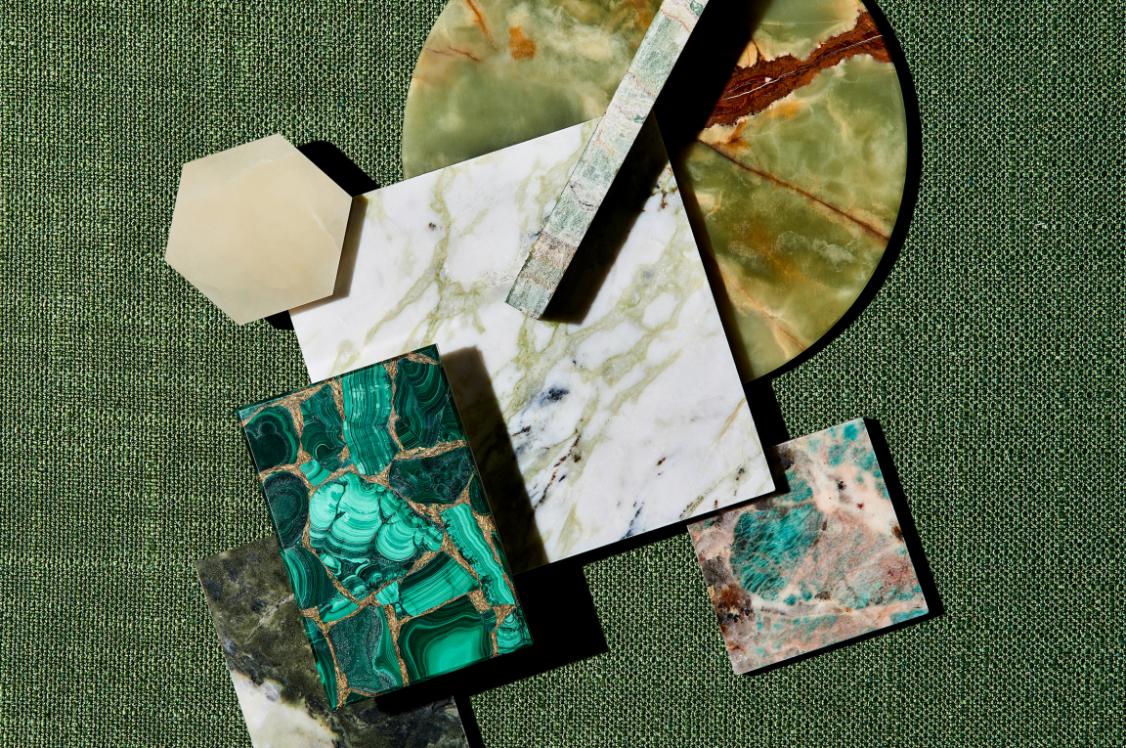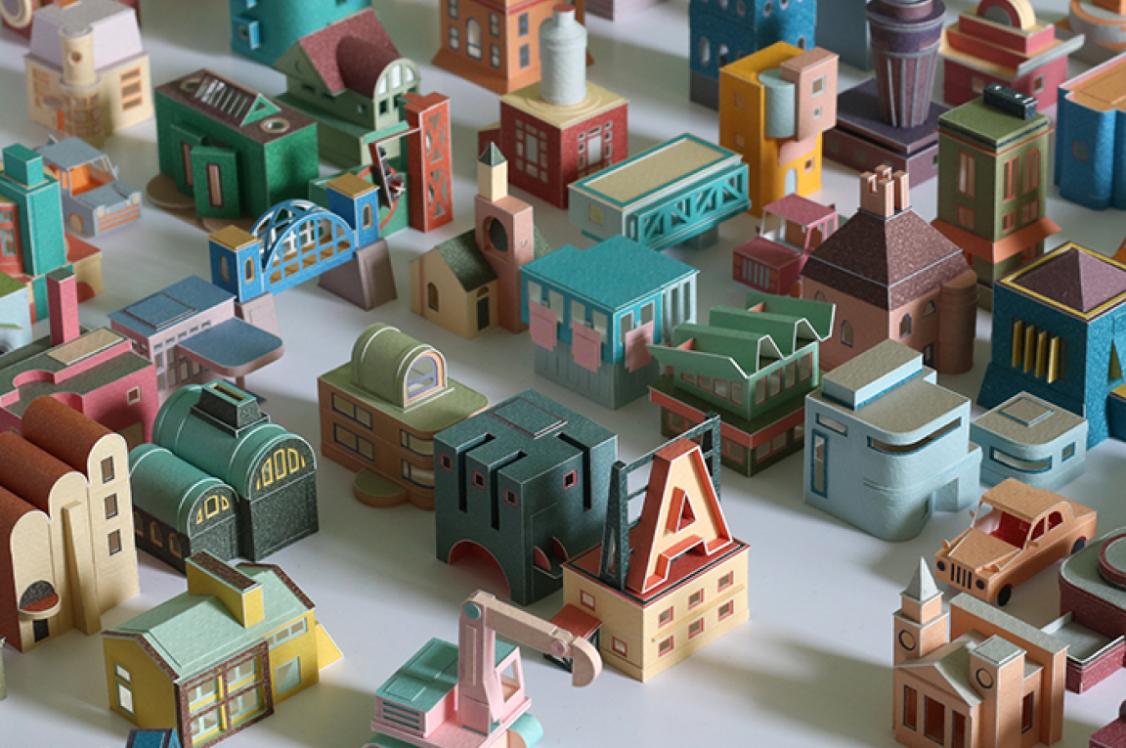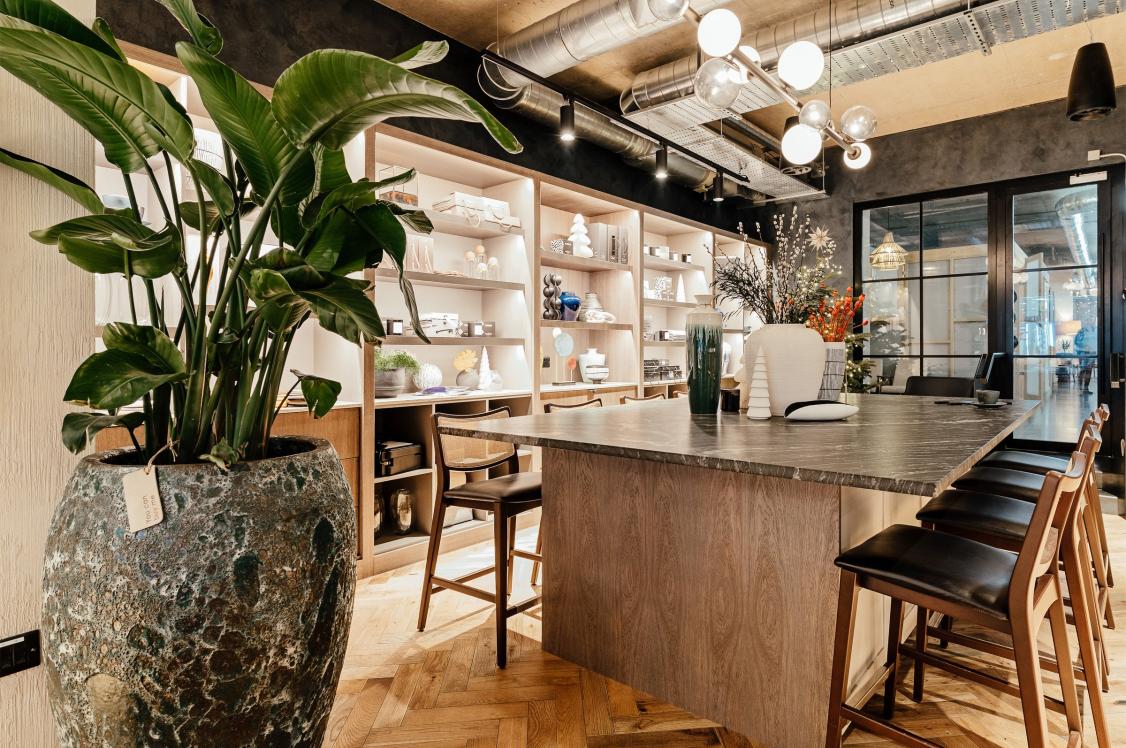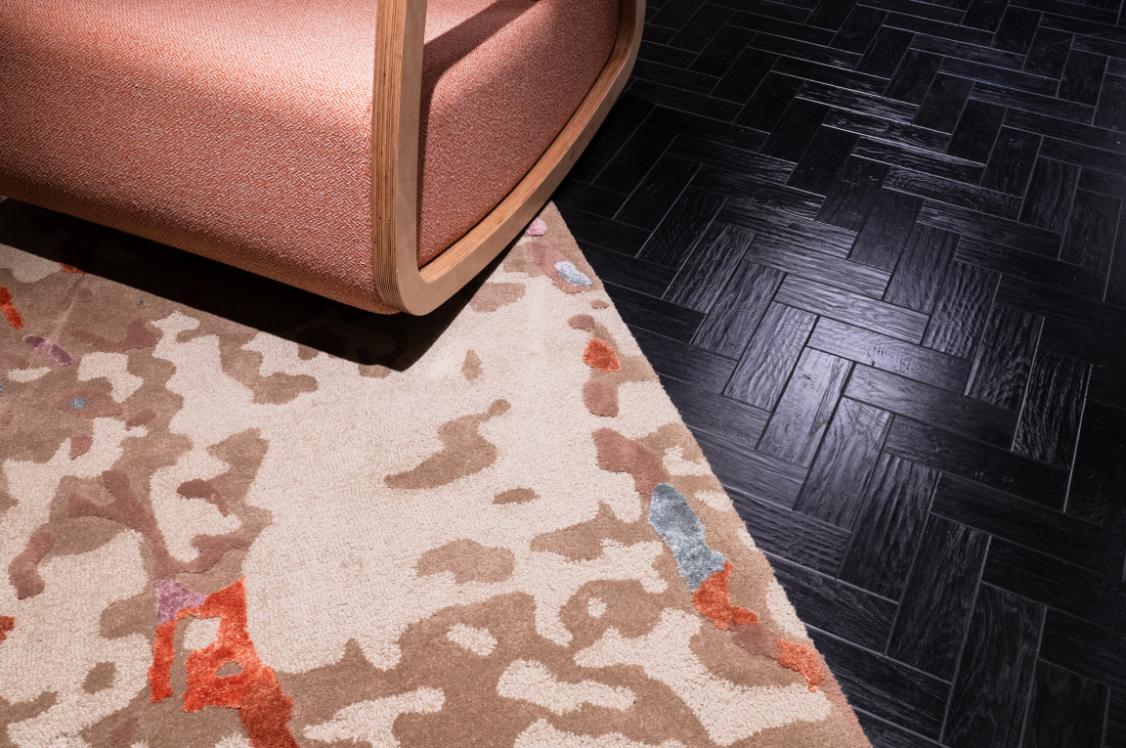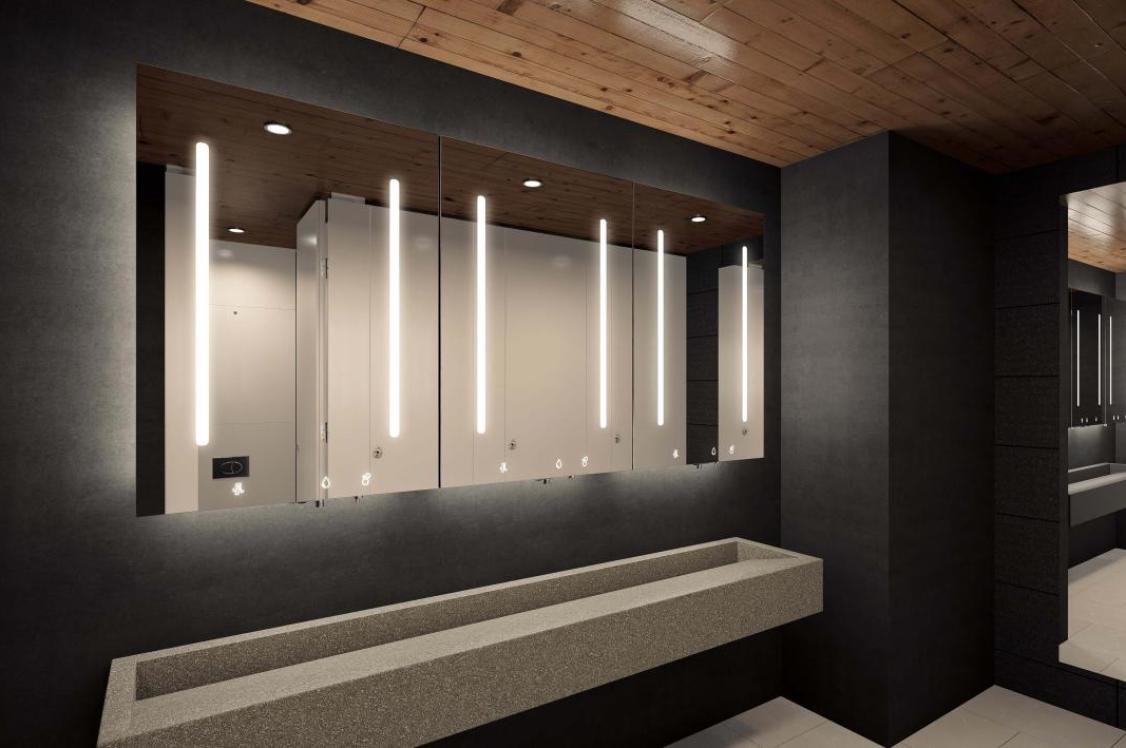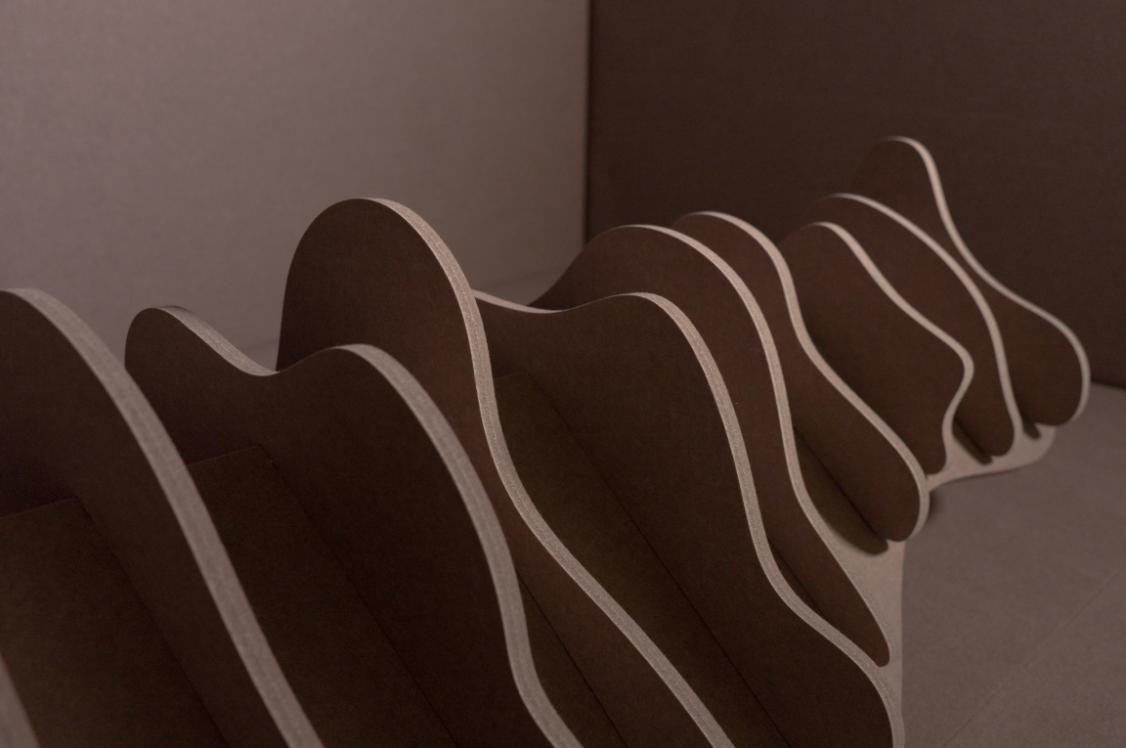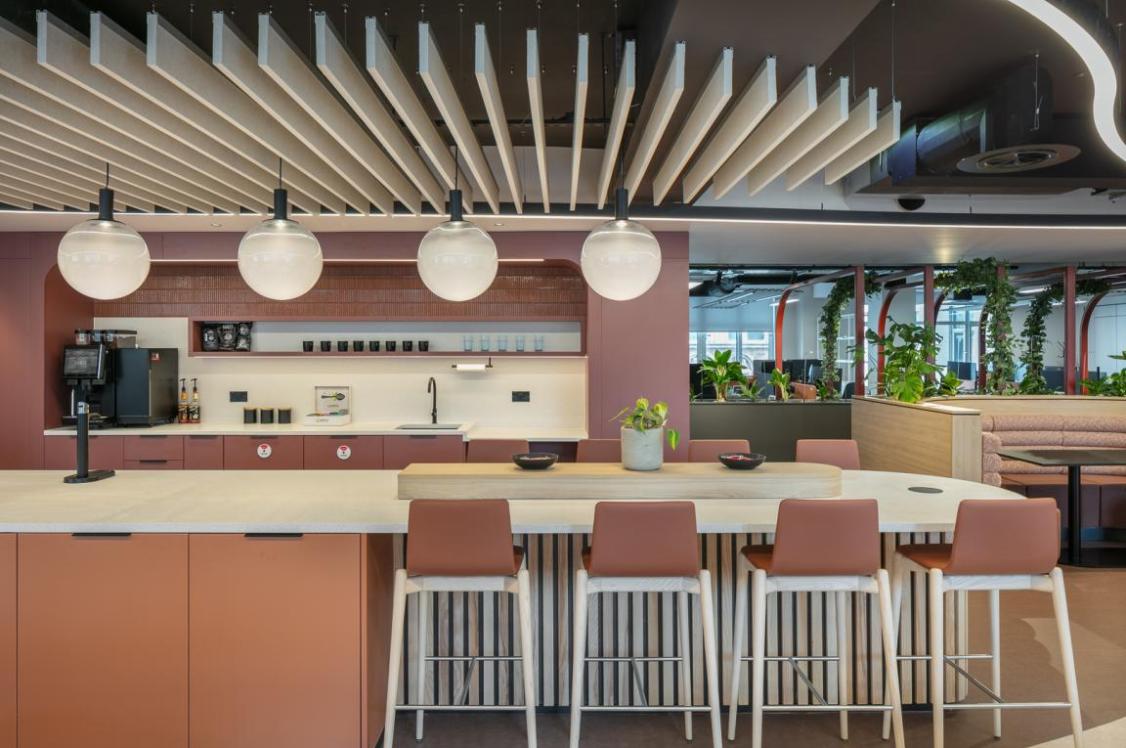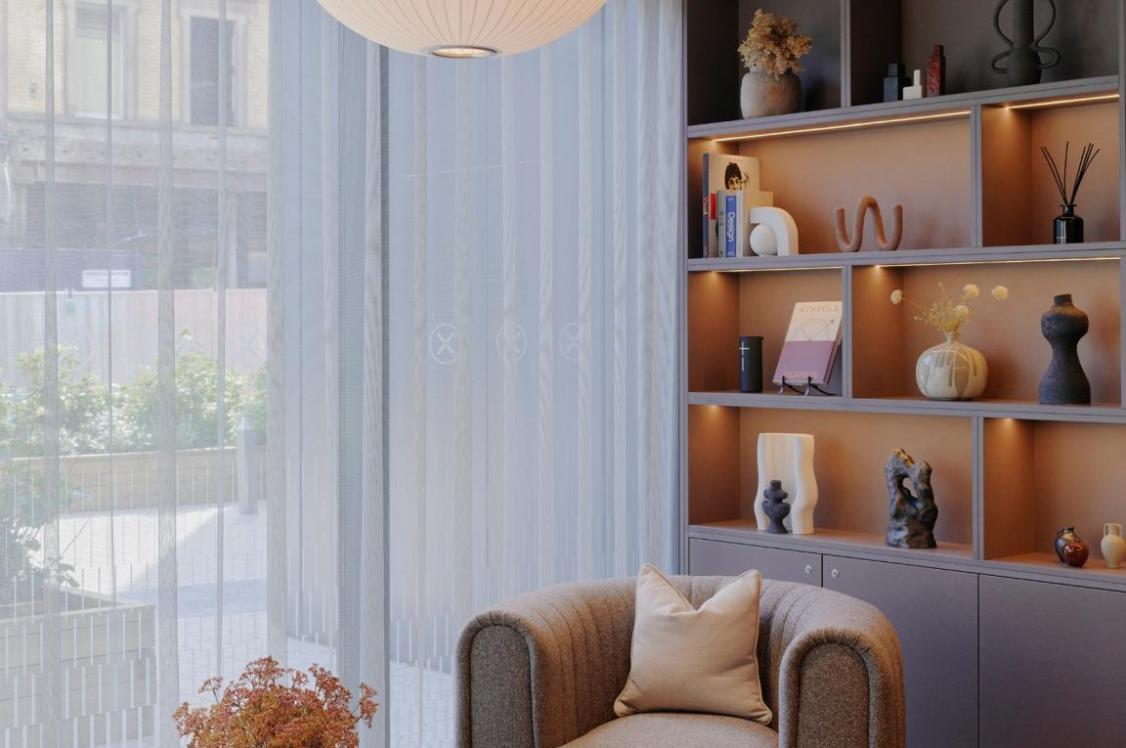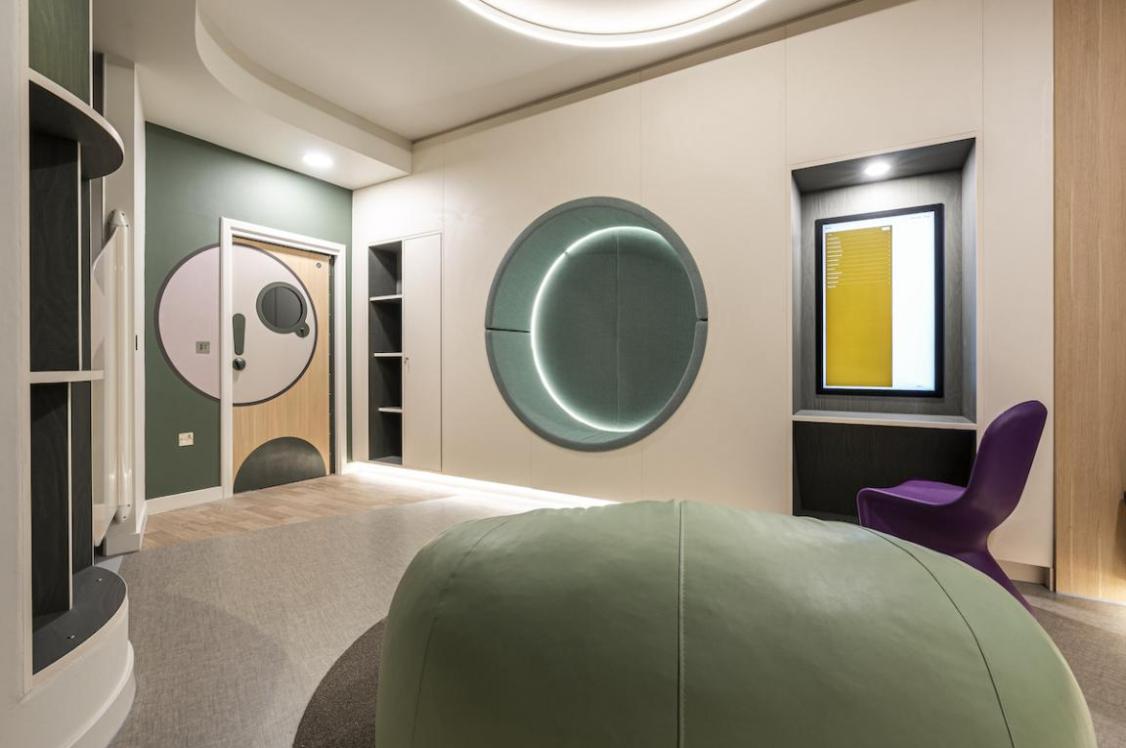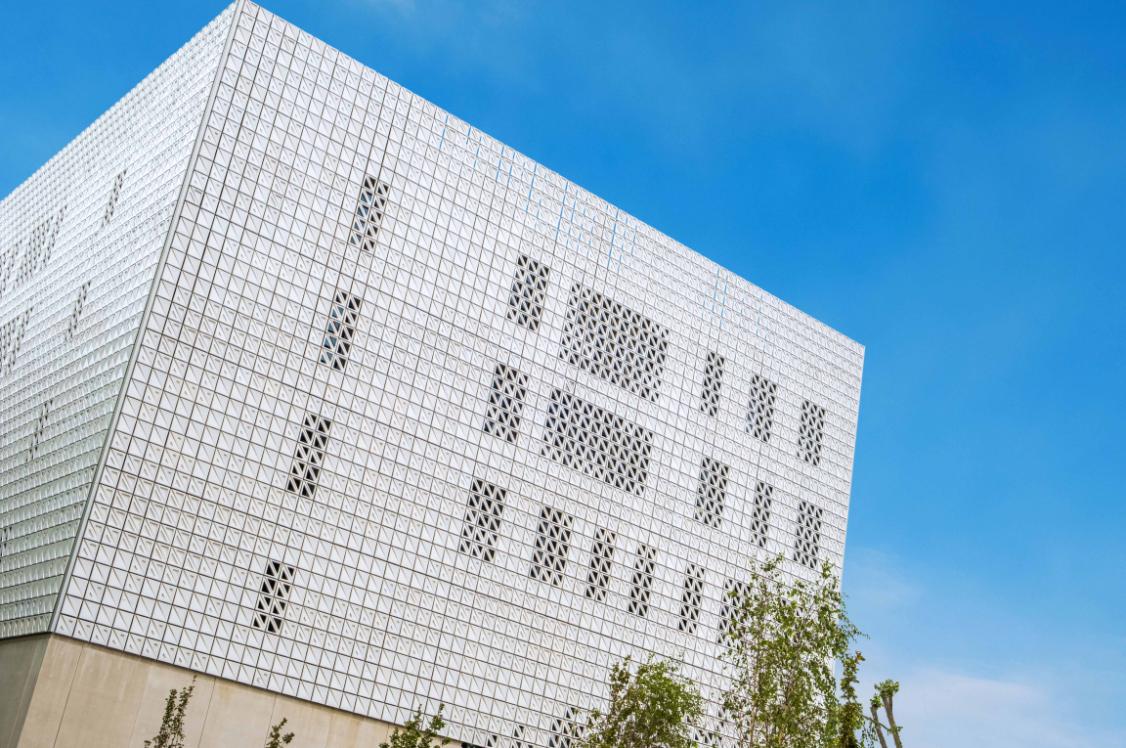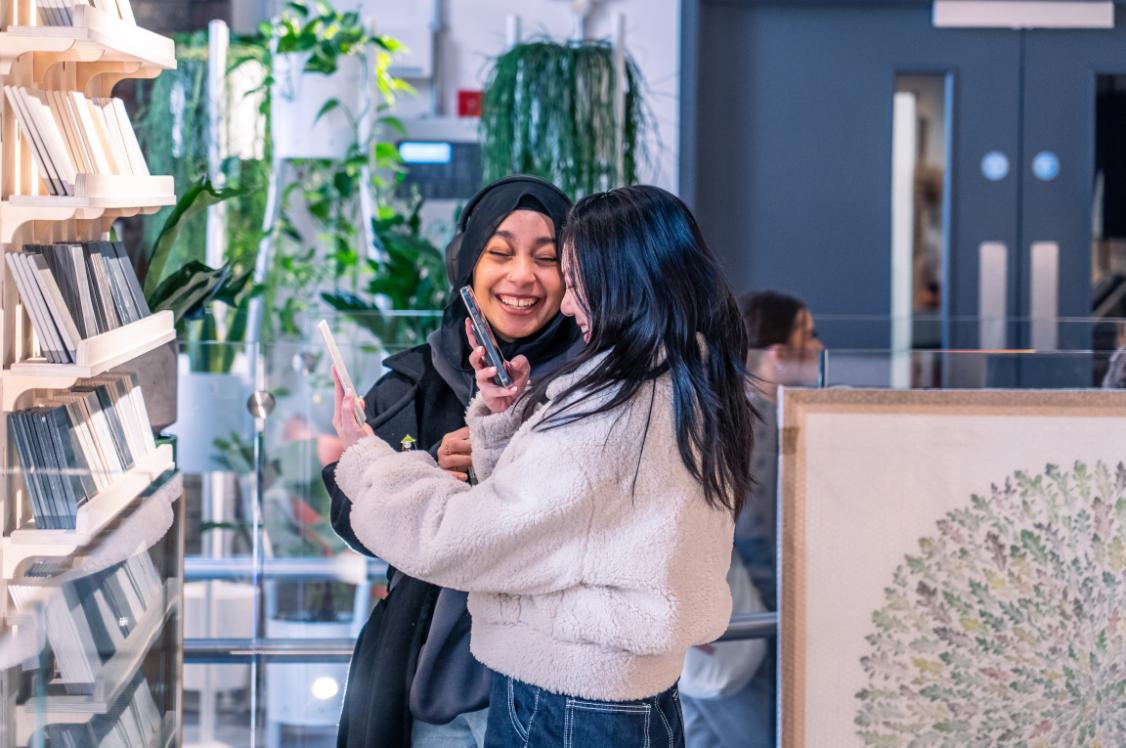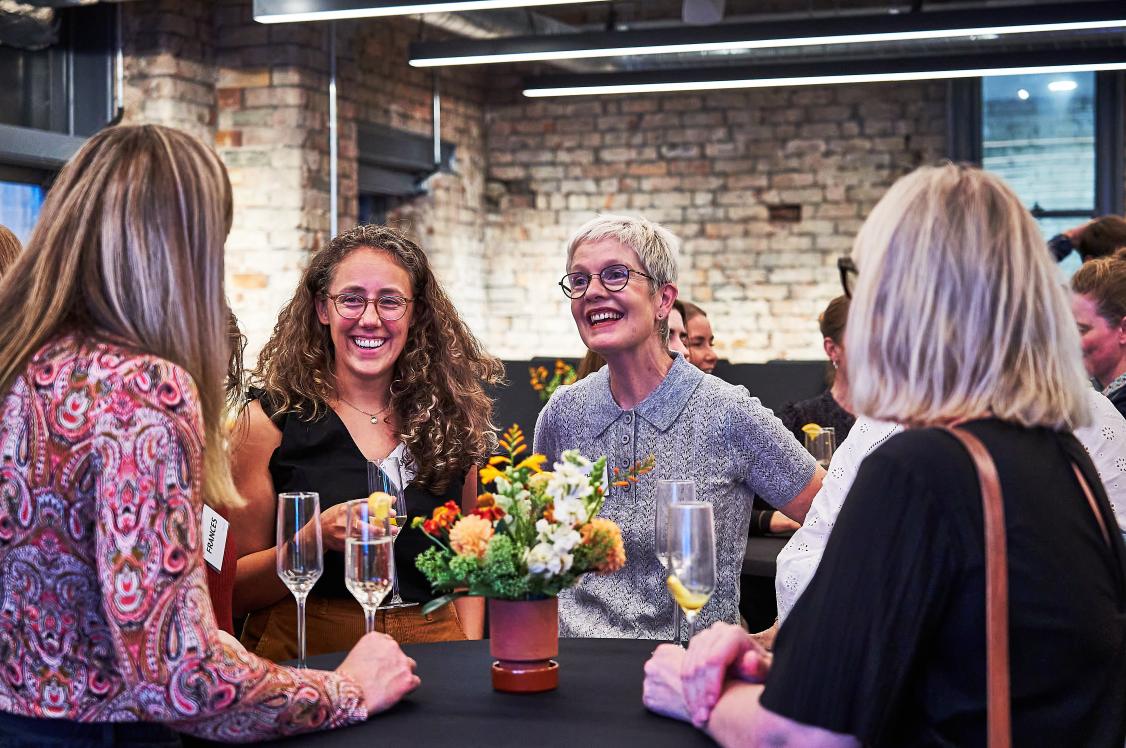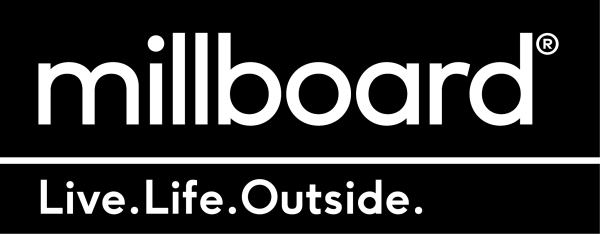Material Source Studio Presents: Designing for EDI – with Dr Stephanie Fitzgerald, author of Reworked & founder of Soyo Ltd.

Credit: Tim Ainsworth
The dedication in clinical and neuropsychologist Dr Stephanie Fitzgerald’s fourth book, Reworked, reads: “To everyone who has ever had a bad day at work. I’ve got you.”
While all of us can likely relate, designers are attuned to understand that the 'why' behind a consistent run of bad days at work might not be much to do with the role being undertaken - rather the environment in which it is being performed. But how can workplace surroundings be tailored to set off good vibrations in the brain and body, for each and every person's individual needs? What's the impact of this design as a catalyst for chemical reaction?
Opening up a frank hour-long, one-to-one discussion, with a sprinkling of audience commentary, host Material Source director David Smalley explored questions such as this with Stephanie through the themes of designing for EDI and neurodiversity in the workplace, tapping into her vast experience and evidence-based research to understand why some spaces work for all, and others simply don’t work.
Perhaps more than ever it felt like the 60-minutes flew by, but the learnings were abundant, as you’ll discover in the write-up that follows…
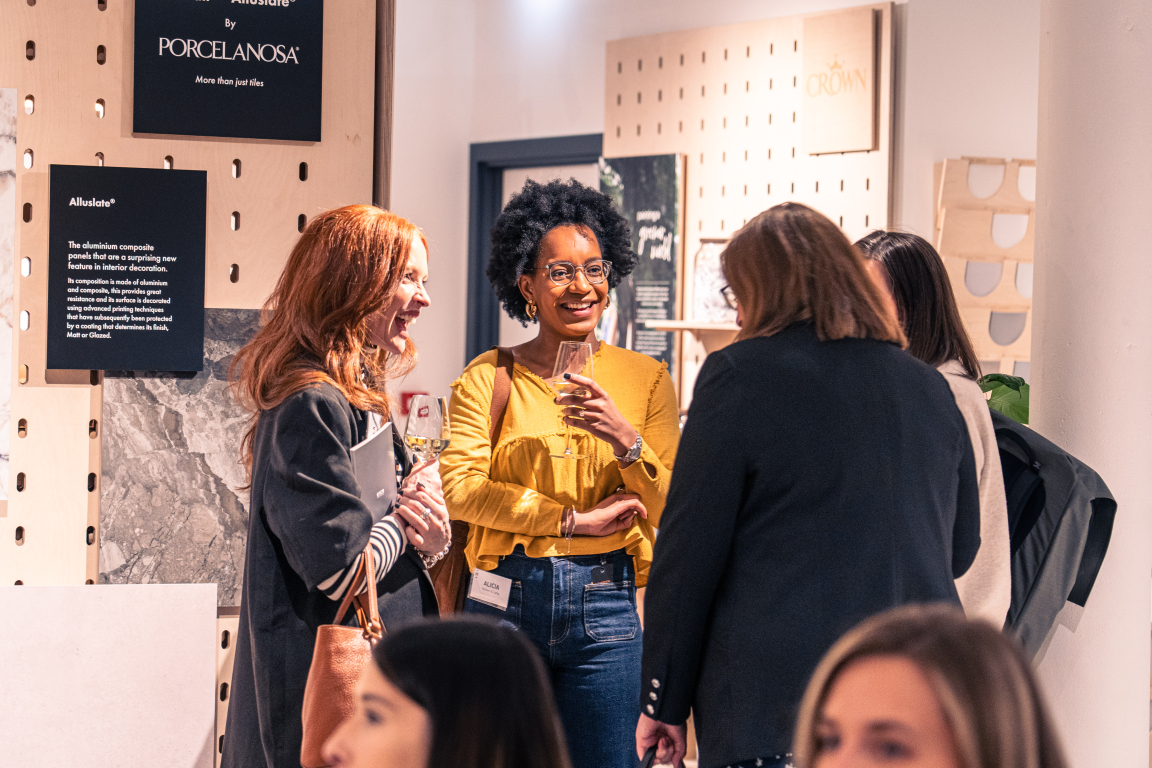
Credit: Tim Ainsworth

Credit: Tim Ainsworth
What is neuroception vs perception?
Stephanie begins with the opening passage of Reworked’s Chapter 13. “Don’t you love walking in somewhere and instantly warming to the vibe? You can’t put your finger on it, but there’s something about the design, the feel, the atmosphere, that just works for you. You feel instantly at ease and comfortable, or uplifted and excited to be there. You can also experience the exact opposite where you walk into somewhere and hate it. Something feels off. The lighting is wrong, or it feels unfriendly. The environment we walk into evokes different moods and feelings in us, and where we work is no different.”
This spurred David to ask, “When we walk into somewhere and it affects our mood or feeling, what’s happening in the brain?”
“It’s down to neuroception. You have your perception – your conscious processing of events, people, and the environment around you – so when you walk in somewhere you perceive whether you feel safe and relaxed. And in the background, you have your neuroception – which is your brain working hard to assess your environment and detect threat. All your brain is interested in is keeping you alive, it’s as simple as that. It constantly scans for threat. Your neuroception is your brain’s way of feeding back to your body about how safe you are.
“At some point, everyone will have experienced a shift in neuroception, where, on paper, everything has stayed the same – you might be at the pub with your friends, and suddenly you get a gut feeling that you need to leave. And you don’t know why, but there’s something in your brain that’s telling you that you’re no longer safe there.
“Our brains are a bit like naughty puppies, they need training, sometimes they don’t fully understand what’s going on, so sometimes neuroception can get a little bit skewed by the environment it’s in.”
“So, how did you feel when you walked in here, to Material Source Studio?”, asked David.
“Could you possibly get a safer space?” commented Stephanie, “I loved it. From the tones to the lighting and greenery - everything we’re going to be talking about.
“Crucially, you can see to the very ends of the space, particularly noticeable downstairs. This is beautiful for appealing to your brain in terms of safety because there are no surprises. It doesn’t veer, my brain isn’t saying ‘what’s around that corner?’ – I can see my escape route.”

Credit: Tim Ainsworth
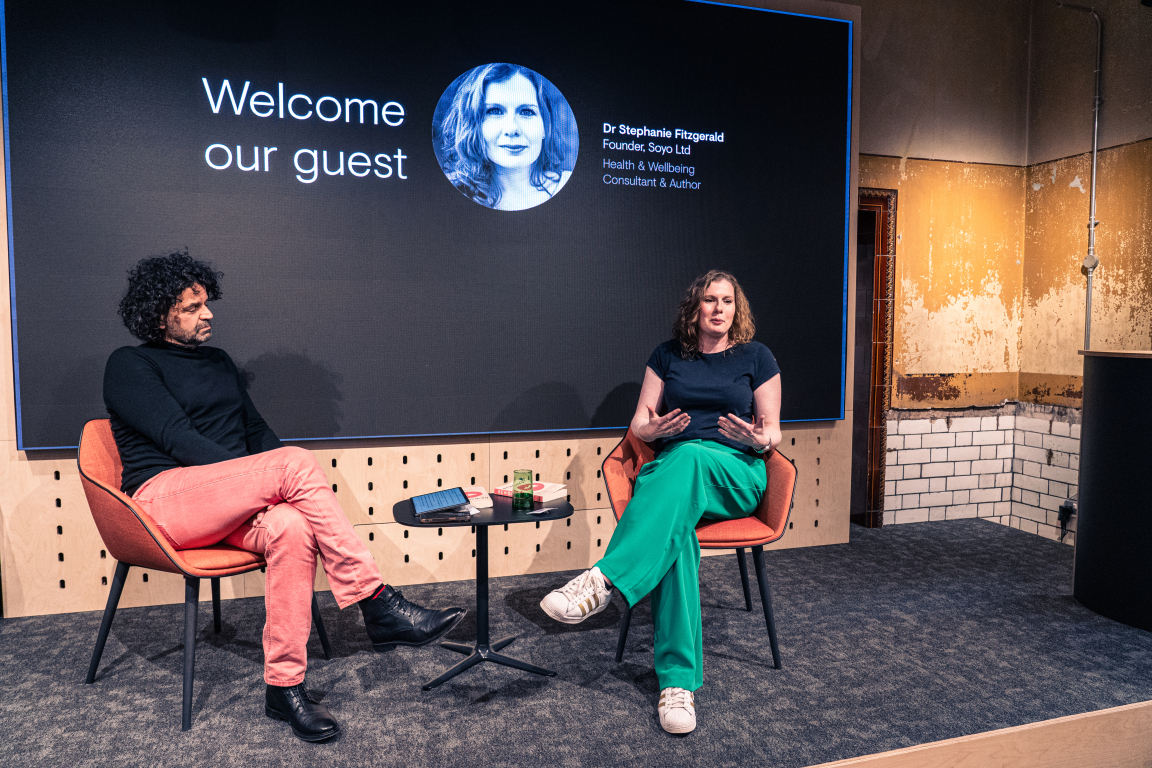
Credit: Tim Ainsworth
Is the office outdated?
Putting the 'office is dead' sentiment that became popular post-Covid under scrutiny, David queried, “Is the office still an important part of what we do?”
“I think the office is still important”, responded Stephanie, “but, I don’t think it’s important enough for these return to the office mandates. How we engage with work is as important as the space itself. But the office can define everything in terms of how you feel, your mood in the workplace, your ability to concentrate, and what I do is support companies with designing for cognitive wellness, which is optimising a space for brain utilisation. So asking ‘what do I need my brain to do in this environment? And how can I boost it?’
“It can be a space to think, reflect, and socialise, plus it can improve a sense of engagement with your company. It’s key when you’re in your office, it feels like you’re in your office, and not a generic office space. So there should be something there that signifies ‘I work here, for this brand’. And that could be simply done in the colour palette used.”
Looking specifically at gender differences, Atul Bansal, founder & co-owner, Sheila Bird, asked whether factors such as this play a role in how people feel differently in a space?
“Technically, we all have the same brain”, replied Stephanie, “but there’s no doubt that we are not seen the same, and we experience different levels of safety in society.”
Offering context, Stephanie highlighted a client’s workspace where the desk configuration meant many people had their backs to the door. “For women, especially, this doesn’t feel safe. Women are designed to scan for threat more than men. Having said that, no one is going to be particularly happy with their back facing the door.”
“How does this type of threat apply to someone less able bodied than their colleagues?” continued David.
We talk about people with disabilities, but it’s environments that disable people.
"Someone can be disabled by the environment that they’re in – if it doesn’t support someone, they are instantly disabled.
“In my own experience, after having ankle surgery I had to get to and from work using the London Underground in busy rush hour. Now, have you ever tried to do this on crutches? It just doesn’t work – I wasn’t abled to get to work. So my two-hour commute turned into a four-hour commute.”
“Legally, there are things that have to be put in place for disabilities in the workplace, but how much further could designers/businesses go?” questioned David.
“I definitely think they could go further. And it’s also thinking about less visible differences, so supporting health conditions people are managing that are less obvious. That could be something like IBS, which is very common. While a workplace may offer the legal number of bathrooms, how comfortable do people feel using them? We see a bias where people that are managing health conditions tend to be remote workers, but wouldn’t it be great if the office accommodated their needs so they could feel the same sense of connection that their colleagues get?”
Bias, processing and flexibility
Continuing on the trajectory of supporting comfort in workplaces for everyone's needs, David asked, “what about gender neutral toilets?”
“I really like offices that flex”, replied Stephanie. “My ideal situation would be a mix – so you have gender neutral toilets, and some gender specific to give people options. I don’t think any group should be excluded, it shouldn’t be all or nothing.
This idea around offering flexibility and comfort obviously links to the tangible design elements of a scheme, but audience member Carolina Vasilikou, senior lecturer, Manchester School of Architecture, asked whether these are the things the brain notices - “What sticks out most when you’re processing a space? And what does exposure time in a space do to the brain in terms of its perception?”
Stephanie responded, “When I go into a space, I ask to spend at least 30-minutes in the environment, uninterrupted. The reason I do this, is because if there is any sense of threat, typically, your window of tolerance is 25-minutes before it plateaus and then calms down. So say, when I walked in, the office was bright purple and I’m not a fan of it, I’d be experiencing bias rather than neuroception but I’d need time to process and get over it.
“It’s also important to spend a day in a space to see what happens to my energy and mood levels. My biggest tell is if the light stays exactly the same. If there is no variation, I know it won’t work for my brain – it’ll affect my sleep, my appetite. This is why natural light is so important, because our brain registers day and night, and the passing of time. When you’re in an environment where there’s no natural light, your brain doesn’t understand what’s going on. There are no markers. This is the type of office where you’d see people crack open their lunch at 9.30am. And it causes stress, and makes you tired but wired.”
If you experience a sense of dread about going into a workplace, it’s because your brain knows it’s not good for you.

Credit: Tim Ainsworth
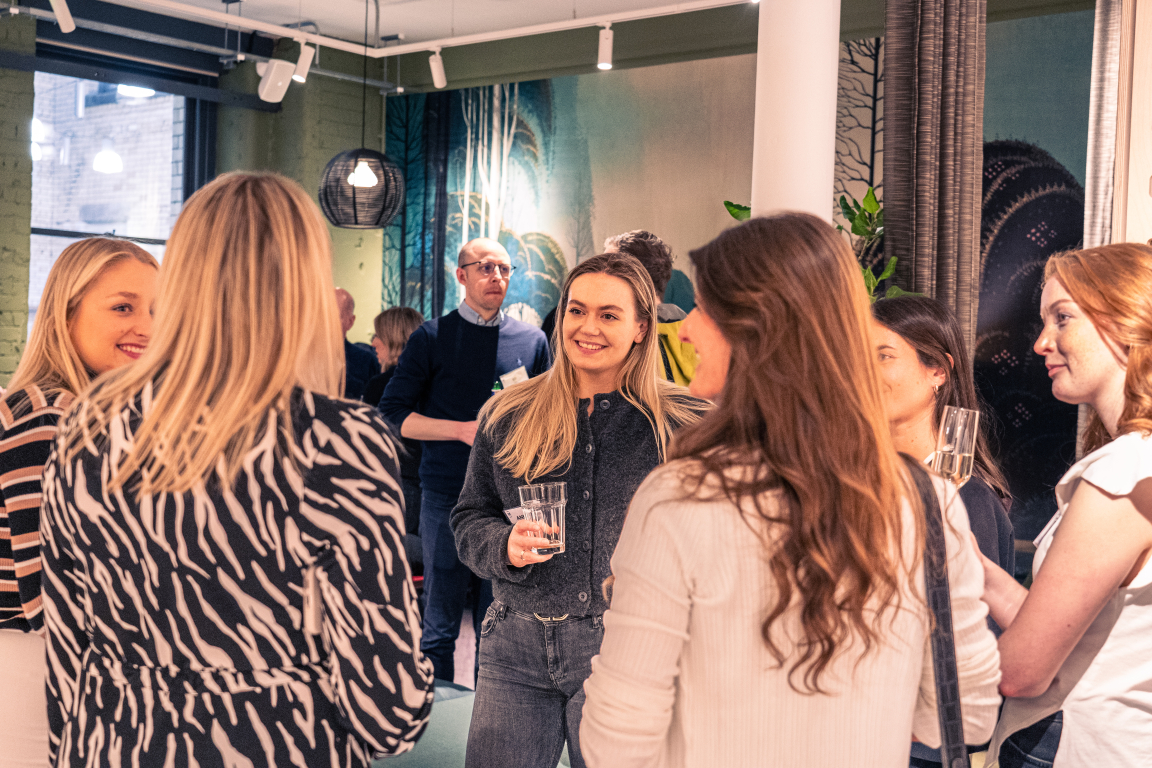
Credit: Tim Ainsworth
The signs of stress – and how to recognise them in others
“Your stress response is your sympathetic nervous system – which is not as nice as it sounds - being activated”, explained Stephanie, “It’s your brain dumping a load of stress hormones telling you you’re not ok. Parasympathetic is good – it’s the ‘calmer down’ part of your brain."
“How does stress manifest itself? What does it look like physically?” asked David.
“If we go from head-to-toe, stress headaches are caused by the sympathetic nervous system being activated, which leads to your pupils dilating. That’s useful, because if a lion entered the room, then I’d need to take in more information to figure out who I could outrun. Whereas, if I’m just reading an email, I don’t need that level of response from the brain. But there’s no way of calming it down. So your pupils dilate and your screen gets brighter. The signals from the brain get louder. You may notice this when you approach a tricky junction in the car and need to turn the radio down to concentrate. Nothing else has changed other than your sympathetic nervous system kicking in.
“You might also get a stress cough because you’re not producing enough saliva to clear your throat. And in the bowel, either nothing moves, or everything moves. The bladder also contracts, so when people feel under threat it’s really important they have access to toilets.”
“Without asking these questions, can you tell if someone is stressed?” David questioned.
“Oh yes”, said Stephanie. “I’d be less worried about the people swearing and slamming their laptop shut, and more so about those that have withdrawn. Your brain wants your tribe, but society says you’re being a party pooper, so if you’re stressed, you feel you should withdraw from others. So it might be the colleagues with their heads down just getting on with work who are the most stressed, but not showing it."
This prompted David to ask, “Thinking about the hybrid situation we’re commonly in now with work, what are the potential issues with that?”
“Forgetting to ask, and making assumptions around peoples’ behaviour”, responded Stephanie. “If someone’s not joining in or seems distracted and they’re in front of you, it’s easier to tap them on the shoulder and ask if they’re ok.”
“But if they’re only on a video call once a week?...” continued David. “It’s much more difficult”, added Stephanie.
“How do we start a conversation with people to help them notice this, or offer guidance to help verbalise it?” asked Ed Cutler, associate, PRP, from the audience.
“When people are struggling to verbalise how they’re feeling – numbers, data, ratings are a much easier way to facilitate it. It might be ‘how do you feel on a scale from 0-10?’ or even a set of emojis.”
Working for Rolls Royce during the pandemic, Stephanie recounted having to attend Covid briefings with Public Health England before doing announcements to staff during a time where 20% of the company’s employees were made redundant. “I would be wiping away tears before putting my brave face on for video calls and webinars. What they saw was happy, positive Steph. And when I shut my laptop down, I burst into tears.”
Anyone can fake happiness for an hour.
Not all sectors are created equal
Robert Hopkins, director & head of sustainability, AHR Architects, moved the conversation to specifically look at the design of lab spaces, which, in his view, can be very uniform. “The perception we have around workplace at the moment is focused on desks, breakout etc, but one of the largest growth areas for us in Manchester is this hybrid idea of integrating workplace with Cat-2 Lab space. What worries me is catering for neurodiversity when what we could potentially see is rows and rows of lab benches and bright LED lights. The one thing these people don’t need is this level of uniformity. What direction should we take our research in terms of how labs should be designed?”
“In terms of what to focus on next, is where those spaces can be flexed quickly. Because they are likely to be shared. It’s the same in manufacturing. A bench may be set up for the job, not the person. It’s difficult then to make someone feel it belongs to them. Could anything be made adjustable? Still meeting the requirements, but allowing more flexibility.
“As long as people can have a level of control over the basics, they feel more connected to their workplace, and engaged in the task they’re doing. Plus, they will make better critical safety decisions.
“Introducing people to these spaces early and asking what they need is crucial. And it could be something simple, and inexpensive.”
This is something Stephanie refers to as “stage-setting” in her book, Reworked.
Personalisation is so powerful
“What’s the one mistake that you constantly see in the design of buildings failing to cater for neurodiversity?” asked Owen Tracey, senior architect, BakerHicks.
“The thing that makes my heart sink when I walk into a space is if it all looks exactly the same. If I can’t differentiate between different zones, or tasks, or levels of engagement, it all looks identical. Making everything the same doesn’t mean people have equality.”
“Is designing a great place down to tasks rather than individuals, then?” David questioned. “The perfect workspace might exist for someone at 7pm one particular evening. But when they’re doing a different task the next morning, they’re going to need something different. So it’s important to note you can’t design something for one person and expect them to be happy with that the whole time. This is why we talk so much about flexibility and allowing for adjustments to be made.
“Resentment can build when companies are asking their people to come into an office, but they can think and perform tasks much better at home in the environment they have personally created for themselves. This, of course, isn’t the case for everyone. But I think it’s so important to recognise that businesses are competing with the ‘perfect workspace’ and giving everyone the same, uniform setting won't cut it.”
Hospitals don’t need to look like ‘hospitals’
Audience member Emily Fettes, architect, AEW Architects, took the discussion from labs to the healthcare industry, in regards to a current project she's working on, asking, “when there are opportunities to design for both able bodied, and less able bodied people, as well as people with sensitive medical conditions – NHS patients for example, who may be terminally ill – how do you gel all of these areas together to make it somewhere open and accessible to everybody?”
“The first thing that strikes me is to include common threads throughout”, commented Stephanie, “so it’s not ‘this is where healthy people go’, or ‘this is where sick people go’, but a healthy environment that’s there to support everyone to thrive and be healthier.
Maggie’s was heralded as a great example of a space that “doesn’t feel like oncology”, designed exactly in that way. As a member of staff, Stephanie said she felt proud to go and work there. “Other hospitals screamed – people are ill here” but there are a lot of architecturally interesting spaces that make up Maggie’s.

Credit: Tim Ainsworth

Credit: Tim Ainsworth
Hot-desking heat
“What are your thoughts on hot-desking?” asked Jon Humphreys, creative partner & co-owner, Sheila Bird, from the audience, “Are there generational trends?”
A quick audience poll revealed only a third of the people in the room 'like' hot-desking. And as well as the lack of stage-setting, there are other psychological reasons why, offered Stephanie, including proximity bias. “He or she who is closest wins. Essentially, hot-desking is about grabbing an available space, not necessarily the space that will suit the task at hand.”
Giving the example of those in London with a two-hour commute, compared to those living two-tube stops away, by 8.30am all the desks would be gone, and it’s the people that can get in quickest that secure the best available seats – perhaps in eyeline of the CEO.
“That’s not a reflection of who worked hardest to get to work that morning. But about proximity. So, when we talk about hot-desking, it’s not fairer, and there isn’t more choice.”
“In the time we live in though, we can’t allocate a desk for every person, can we?” replied David – echoing a roundtable discussion which took place at our Glasgow Studio, where it was evidenced some larger offices were accounting for being full of people, with the heating high all day, but in reality, only had one or two people working there with the rest at home.
If hot-desking is the most obvious route for businesses, Stephanie urges for better engagement. “Hot-desk mentality can breed ‘it’s mine culture’. It’s like musical chairs. Spaces for collaboration, quiet work etc are needed, and to not make people feel as though they are giving up their precious seat by allocating enough.
“Downstairs here [in the Hub at Material Source Studio] the ‘landscaping’ made my heart sing. And that’s because there are so many different spaces for heads down work, making phone calls, collaboration – every single one of them is safe, flexible, and adjustable.”
“Is this the answer to the office?” enquired David. “For knowledge workers, it’s wonderful”, answered Stephanie, but, of course, there are other sectors to consider.
Good for people, good for business?
Bringing the fascinating conversation to a close, for now, David asked, “when designers are in front of a client asking them to be aware of EDI, what’s the business benefit they can put forward?”
Stephanie pointed out there is “so much evidence for supporting it”. One such report, which showcases the opportunities across profitability and outperformance amongst peers is McKinsey’s Diversity Matters Even More. Here, the holistic impact of diversity on communities, workforces, and the environment is highlighted as vast.
“It’s worth remembering that when you design for neurodiversity, you’re designing for diversity, which just means difference. Everyone is neurodiverse. While we all have the same brain, they are wired slightly differently”, said Stephanie.
“Having a diverse workforce will benefit you – everything is better when it’s diverse.”
To end, Stephanie left our audience with three tips for making them feel happier and healthier in an instant. Here they are in a snapshot for you to give them a try:
Take up space – your brain is designed to keep you safe, and when under threat, we tend to curl up. Think about how you sit at your desk – eyes down, shoulders rounded – you’re telling your brain you’re not safe. Want to feel instantly confident? Open up - stand in a Wonder Woman pose.
Ignore your inhale, it’s all about your exhale – the longer your exhale, the more you open up your parasympathetic nervous system. Think of blowing out birthday candles.
Be a winner – celebrating as you would when your favourite team wins makes you feel happy, so even if you’re doing something stressful you can make yourself feel good.
Huge thanks to Dr Stephanie Fitzgerald for sharing such a wealth of insight into the relationship between the brain, our bodies, EDI and our working environments, to our audience – who asked brilliant questions and have all gone away with a copy of Stephanie’s book Reworked (order your copy here), and to our supporters for the evening, Jennor, Sixteen3, Millboard.
Our exploration into designing for EDI and neurodiversity continues with our next roundtable discussion – stay tuned for the write-up.














